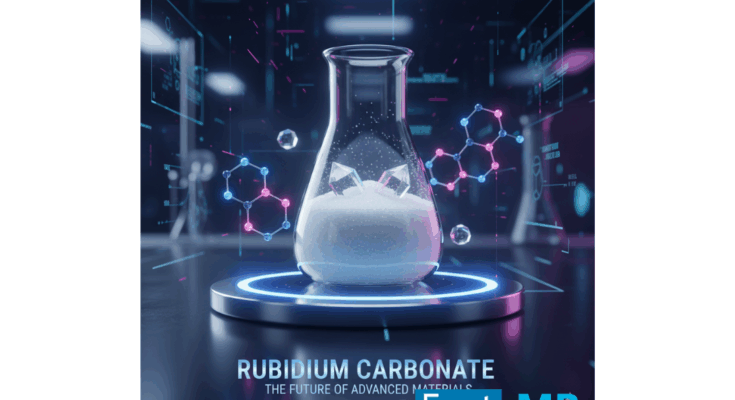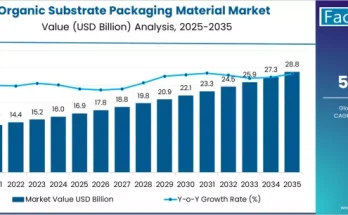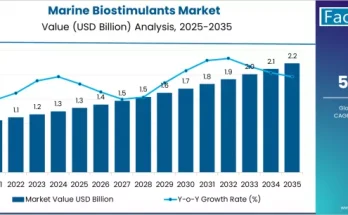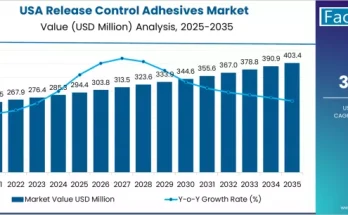According to the latest analysis by Fact.MR, the global rubidium carbonate market is projected to grow from USD 1,536 million in 2025 to USD 2,454.7 million by 2035, expanding at a compound annual growth rate (CAGR) of 4.8%. This steady growth is attributed to the compound’s expanding role in specialty glass manufacturing, biomedical research, quantum technologies, and next-generation battery development.
Rubidium carbonate, a highly versatile compound, has emerged as a strategic material for industries pursuing innovation in optics, energy, and pharmaceuticals. Its unique properties—such as ionic conductivity, high chemical stability, and catalytic efficiency—make it essential in high-performance applications ranging from telecommunication fiber optics to medical imaging and advanced materials research.
Market Overview: Data-Backed Growth Indicators
The rubidium carbonate market witnessed a historical CAGR of 4.3% from 2020 to 2024, reaching a valuation of USD 1,470 million by 2024. Moving forward, from 2025 to 2035, the industry is expected to sustain a robust 4.8% CAGR, supported by technological advances and increased investments in electronics and healthcare infrastructure.
- 2025 Estimated Value: USD 1,536 million
- 2035 Forecasted Value: USD 2,454.7 million
- Top Growth Regions: North America (27.9% market share in 2025) and East Asia
- Leading Players: Alfa Aesar, Merck, American Elements, Materion Corporation, Fisher Scientific, and Sinomine Resource Group Co., Ltd.
Short-term momentum (2025–2028) will be driven by increased utilization in positron emission tomography (PET) scans and telecommunication components, while the medium-term outlook (2028–2030) will benefit from the expansion of the global electronics and biopharmaceutical sectors. In the long term (2030–2035), rubidium’s role in renewable energy and next-generation battery technologies is expected to open new avenues for market penetration.
Market Drivers: Innovation at the Core of Expansion
1. Empowered Supply Chain and Post-Pandemic Manufacturing Revival
As global manufacturing and research activities recover post-pandemic, supply chains for critical minerals like rubidium are stabilizing. The increased availability of rubidium carbonate has enabled manufacturers to meet surging demand from optical glass, fiber optics, and pharmaceutical laboratories.
The compound’s use in night-vision devices, quantum computing, and atomic clocks underlines its growing significance in high-tech applications. These innovations are expected to maintain upward demand throughout the next decade.
2. Rising Role in Biomedical and Pharmaceutical Research
The global emphasis on medical imaging and diagnostic precision has heightened rubidium’s role in radiopharmaceutical formulations. In particular, its use in cardiac imaging (PET scans) and ion exchange catalysts reinforces its reputation as a compound of choice for advanced biomedical studies.
With a strong pipeline of medical research projects across the U.S., Europe, and Asia, the healthcare segment is projected to remain a key revenue generator for rubidium carbonate manufacturers.
3. Growing Adoption in Specialty Glass Manufacturing
Rubidium carbonate is a vital component in special glass production, contributing to enhanced optical clarity, thermal stability, and electrical resistance. Its application in precision optics, fiber-optic communications, and defense equipment aligns with the global shift toward sustainable, high-efficiency materials.
Glass manufacturing alone is expected to represent 25.8% of total market share in 2025, reaching USD 655.4 million by 2035.
Challenges: Navigating Regulation and Resource Scarcity
While the market’s trajectory remains positive, the industry faces challenges such as stringent environmental regulations and the limited availability of rubidium resources. The compound’s extraction and processing demand high safety standards, raising operational costs for manufacturers.
Additionally, the emergence of alternative materials in electronics and pharmaceutical applications may slightly temper market growth. However, strong R&D investments and the pursuit of circular economy models are expected to offset these constraints.
Regional Insights: Key Markets Shaping Global Growth
United States: Advancing Through Technology and Healthcare
The U.S. market is estimated at USD 347.1 million in 2025, expanding at a 5.1% CAGR through 2035. Growth is fueled by the country’s dominance in semiconductor production, biomedical imaging, and specialty glass technologies.
Major manufacturers such as Merck, American Elements, and Materion are expanding their R&D and production capacities to serve emerging sectors including quantum computing, precision optics, and pharmaceutical innovations.
China: Manufacturing Powerhouse and Innovation Hub
China’s rubidium carbonate market is projected to reach USD 356.6 million by 2035, advancing at a 5.8% CAGR. The country’s robust industrial automation, electronics manufacturing, and biomedical research ecosystem make it a lucrative destination for market players.
Strong government support for renewable technologies, coupled with rising investments in advanced glass and ceramics, positions China as a pivotal growth region for the global rubidium carbonate industry.
Category Insights: Purity and Industry Segmentation
- Purity Segment: The 99% purity grade dominates the market, growing at a 5.0% CAGR, favored for its reliability and high performance in precision glass and electronics manufacturing.
- End-Use Industries: Glass manufacturing, electronics, and pharmaceuticals remain the top demand drivers, followed by emerging use cases in chemical catalysis and energy storage.
Competitive Landscape: Strategic Focus on Innovation and Collaboration
Leading market players—including Alfa Aesar, EREZTECH, Fisher Scientific, Merck, and Sinomine Resource Group—are focusing on strategic partnerships, vertical integration, and custom formulation development to strengthen market positioning.
Investments in research and development (R&D), supply chain optimization, and sustainable production practices remain central to competitive differentiation. Companies are also exploring rubidium recycling and purity enhancement technologies to improve cost efficiency and environmental compliance.
Outlook: Future-Ready Market for Advanced Material Innovation
The rubidium carbonate market’s progression toward 2035 underscores its evolving role as a critical enabler of next-generation technologies. As global industries prioritize precision, sustainability, and performance, demand for rubidium carbonate will continue to grow.
For manufacturers, the next decade offers substantial opportunity to innovate, invest, and lead in an increasingly data-driven and materials-focused economy.
Browse Full Report : https://www.factmr.com/report/rubidium-carbonate-market



